Circular starts with using less
Facts: Circular starts w/ less ♻️ 📉; Feelings: Inspired by land care✋ 🏞️; Action: I got a heat pump! 🔌☀️❄️
Hi friends,
It’s been a minute! Since I last wrote, I had a fantastic time as a visiting scholar at Stanford, getting inspired by tons of smart folks at the new School of Sustainability (and bonding with beloved people and landscapes in California, and eating a lot of excellent tacos). I have so many new ideas to share with you that I don’t know where to start. So let’s just dive in!
Facts: Circular starts with using less
The circular economy is getting lots of buzz. But to actually go from a linear “take-make-waste” world to a lovely infinite loop, one key idea often gets lost:
A circular economy starts with using less.
There’s so much focus today on optimizing efficiency: using materials fully, without waste.
Efficiency is good! It saves money! No one likes waste!
But many of us today are consuming resources far faster than the Earth can regenerate them. For example, the average US resident consumes as if there were 5.1 Earths, when of course there’s only this one we all share. Switzerland just passed its “Earth Overshoot Day” on May 13.
Even if we eliminated waste and consumed perfectly efficiently, this total amount of consumption is too high. Womp womp!
That’s why a circular economy starts with using less. We have to right-size the amount of consumption first to get the whole circular system to work.
A recent paper by Jan Konietzko and colleagues highlights four elements of a circular economy:
Narrow: use less materials and energy
from design through use and recovery. This stage includes new business models, like incentivizing consumers to consume less, and encouraging sharing to decrease the total number of products needed.
Slow: use longer
by designing for durability, and using business models that offer a product as a service.Close: use again
so that products are reused or recycled after a consumer uses them. This includes designing for recycling, producers supporting product and component returns, and developing waste-to-product offerings, like soap made from coffee grounds.
Regenerate nature
by using non-toxic and renewable materials, powered by renewable energy, and recovering nutrients that are usually lost (like turning pee and poop into fertilizer).
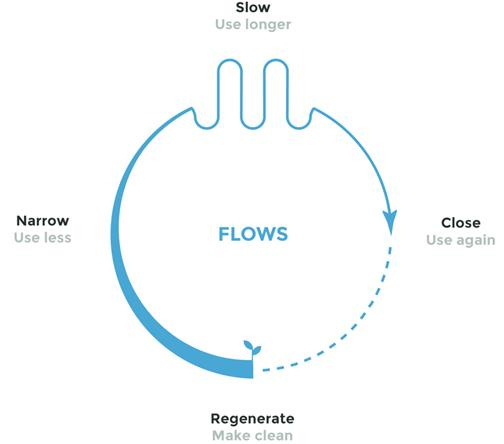
How can you apply these four circular principles in your home or at work?
Feelings: Inspired by Land Care
In California, I spent time in beautiful places being restored and cared for by dedicated people, and it was soul-nourishing.
I visited the monarch butterfly habitat at Ellwood Grove near Santa Barbara. The grove is beautiful, but needs some love. When I visited, the trail was flooded, and there were many downed trees that broke up the shelter the butterflies rely on; only a few trembling monarchs had made it through the latest winter storm. But my tour guide George Thomson, Parks and Open Space Manager for the City of Goleta, has a plan to reduce fire risk and improve butterfly habitat in the grove, and has secured state funding to start making this plan a reality.
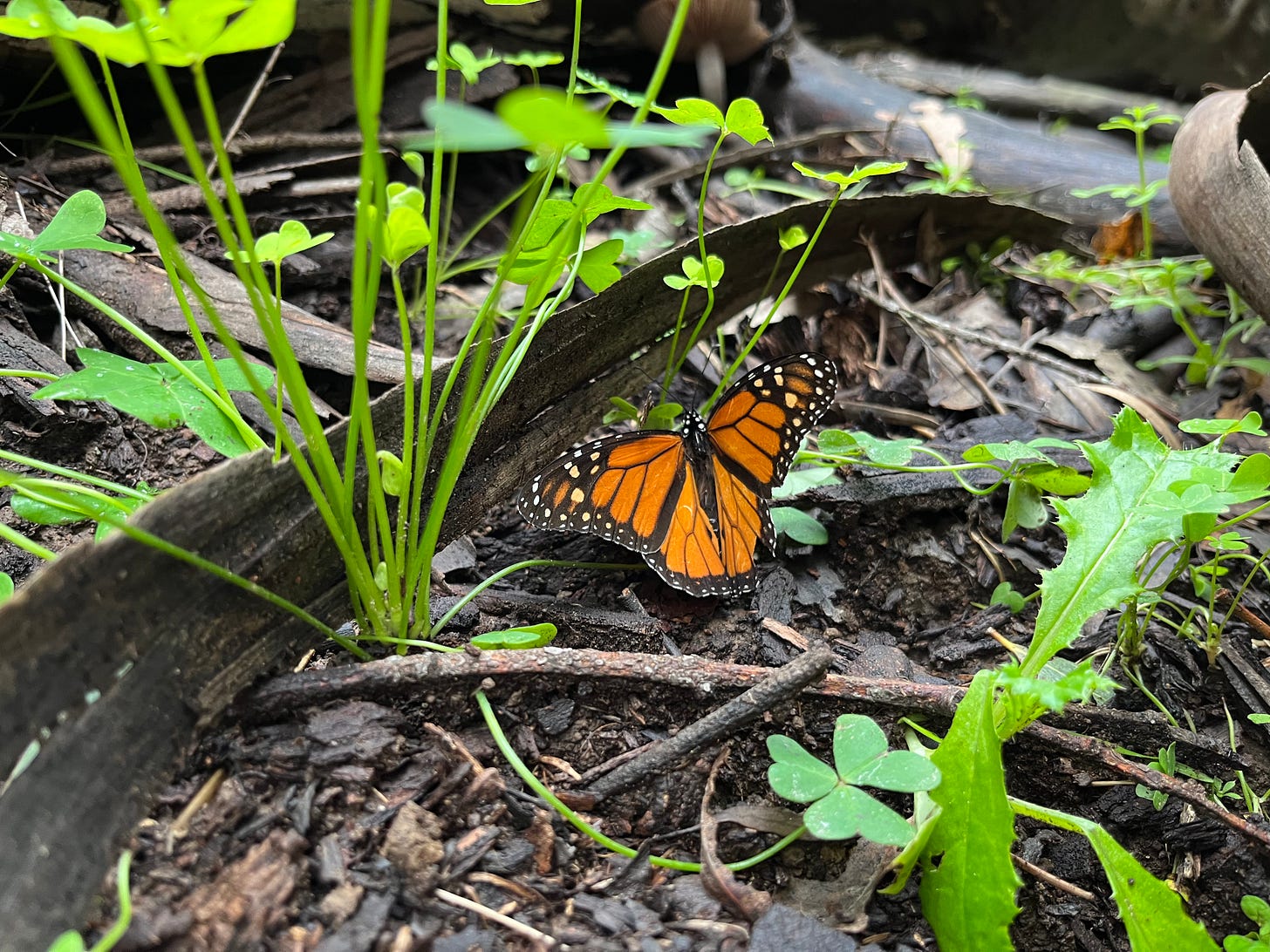
My college buddy Dave Halsing now has the very cool job of restoring 15,000 acres of tidal wetland in the San Francisco Bay (the largest such project on the West Coast!). I felt like an afternoon exploring the shoreline with Dave gave me “marsh goggles” with which to see the world. The Bay is, of course, a defining feature of the Bay Area, where I grew up, but it’s been so heavily transformed I often barely see it. Standing on a hill at Bedwell Bayfront Park at sunset, with healthy tidal marsh to the north and the former salt ponds Dave is restoring to the south, I felt energized.
And I joined Edgar McGregor on his daily #EarthCleanUp, picking up trash from a local park. I asked him how over 1,300 days of cleaning up a mess others had left behind had changed his view on human nature. I loved Edgar’s answer:
"I try not to think about the litterbugs. It's demotivating. Instead I think about the cleanup as a treasure hunt. It makes me happy to be out here."

Is there a local park near you that could use some love? It just takes a bucket, a pair of gloves, and a bit of time. What about a local land- or sea-scape being restored? The organizers could probably use some volunteers…
Thank you to all of the people doing the work to care for nature— I felt inspired to learn from you!
Action: I got a heat pump!
You know about heat pumps, right?? Those magic boxes that both heat and cool your home by moving air around?
Heat pumps are a great example of what it looks like to “electrify everything”— replacing stuff that runs on fossil fuels (in my case, a propane furnace) with stuff that runs on clean electricity. As I wrote last fall, heat pumps are one of the best ways to save energy at home.
On this extended visit back to California, I managed to find a contractor who’s an expert in heat pumps, and get almost all the work done while I was there. Yay! (The final permitting inspection is scheduled soon, which should be the last step— fingers crossed!) Here I am the day the heat pump was turned on. I was joined by a group of Stanford students working on a project to make it easier for homeowners to install heat pumps, who used my house as a case study.
Your key actions to make way for a heat pump:
Start planning now to replace your current fossil space heating system with a heat pump. Most furnaces are only replaced after they break. If you’re caught desperate to have a livable house in a heatwave or a cold snap, you won’t be in a good spot to get a heat pump sorted.
In the US, the good folks at Rewiring America have great guides for what and how to electrify your home for both owners and renters, including how to save money with federal incentives. Check out their 10 step electrification planning chart!
10 things to electrify in your home, from Rewiring America’s guide to help you plan to electrify smart. You don’t have to start in hard mode (heat pumps). Befriend a contractor who has installed lots of heat pumps, so you know who to call when you’re ready. Ask around for personal recommendations. I found Electrify My Home thanks to my friend Rahul. Founder Larry Waters has been in HVAC for 40 years, got heat pump fever in 2015, and started Electrify My Home to exclusively install heat pumps. It was refreshing to work with a contractor who got the big picture. He wasn’t trying to sell me on (artificially) cheaper fossil options. He knew how to size the heat pump based on an energy analysis of the home. He came over and ventured up a ladder to the attic (“not as bad as I expected”) and into the crawl space under the house (“worse than I expected”) to design insulation recommendations that would make the house as efficient as possible to further minimize the energy needed. Good stuff!
If you haven’t already, start saving for your home electrification in your “future box". I wrote about why the future box is better than buying offsets in Under the Sky We Make:
After I’ve reduced my own emissions as much as I can, one option I like for dealing with my remaining emissions is a “future box.” Every time you spend money on fossil fuels (fill up the car, buy a plane ticket), put an equivalent amount of money aside for your future box. This is money to invest in future reductions of your own emissions toward zero (like replacing a propane heater with an electric heat pump)….Given the vast undervaluation of the true cost of carbon today, offsets are usually too cheap. Doubling the cost of gas and flights is much closer to the true social price, meaning you will spend more money toward a worthy cause than you would through an offset, and you’re also more likely to reconsider what is truly necessary carbon spending.
Happy electrifying!
Parting Tidbits
I got to chat wine and climate with the wonderful Elaine Chukan Brown on the Jancis Robinson podcast. Have a listen:
Book Recommendation
To Dye For: How Toxic Fashion Is Making Us Sick--and How We Can Fight Back, by Alden Wicker. (Preorder now— publishes June 27!)
I got to read an advance copy! Here’s my review: “Concerning and empowering. Wicker encourages us to listen to women and our own bodies, to choose slow and low-tech fashion for our own health and the planet’s, and to hold toxic fashion manufacturers accountable. I hope we’ll see ingredient lists on clothing and a paradigm shift towards protecting consumer health as a result of this important book.”
xo,
Kim


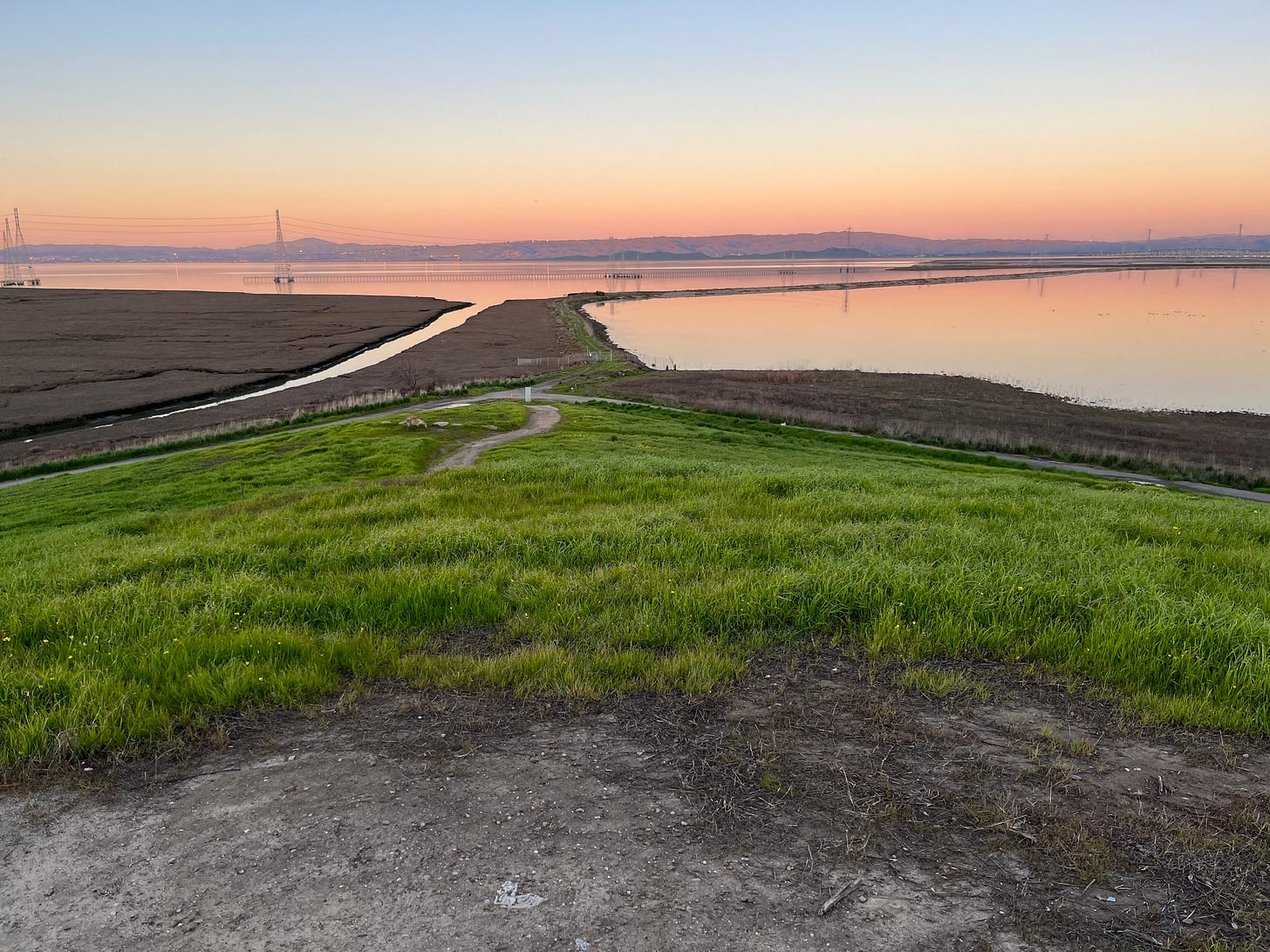
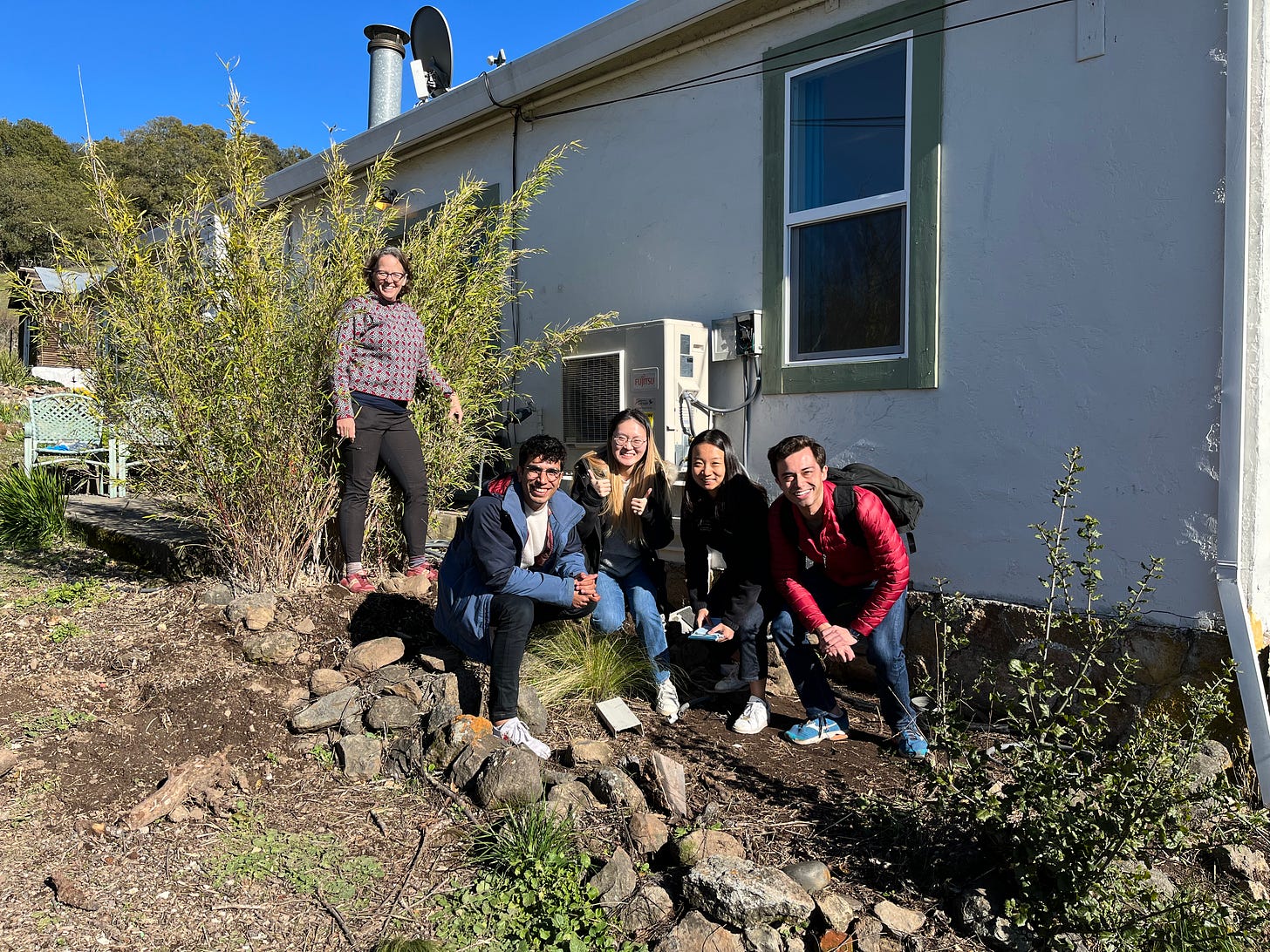
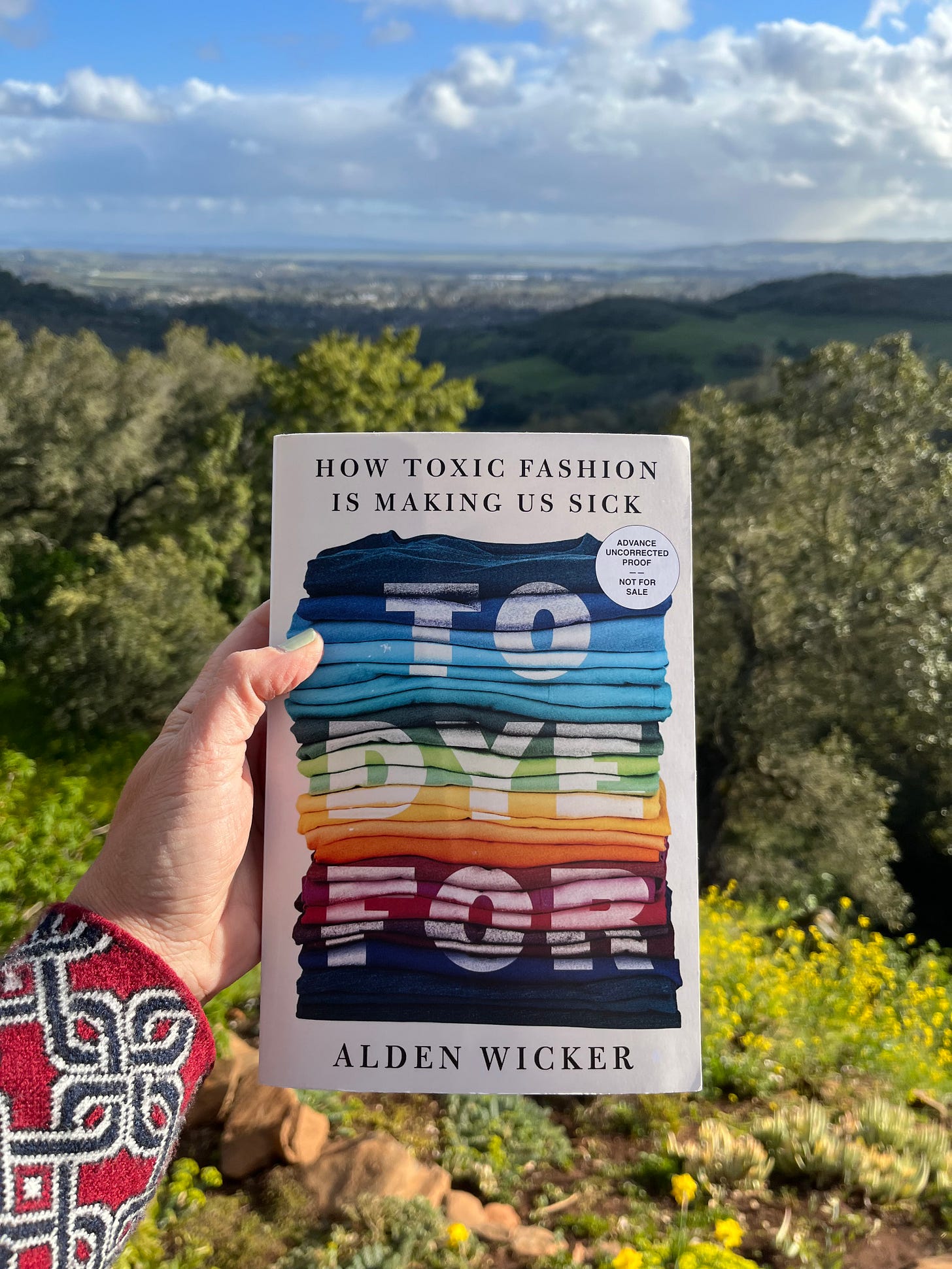
Having worked in or with the circular economy for what I suspect is longer than most, this is one thing which still maddens me - the fact that it still so often isn't evident that resource consumption has to reduce. In fact I go as far to say that a business model which remains predicated on consumption growth cannot ever be circular (do the math(s)). Therefore the thing to change is less about the product, and much more about the business model, processes and behaviours: Look for alternative ways to generate revenue which are divorced from consumption growth and design a process which nurtures this!
Thanks for linking to the South Bay Salt Pond Restoration Project site, Kim! Great to see you and show you around - enjoy the marsh goggles...they get better with use!